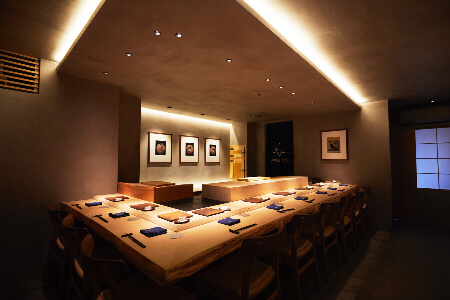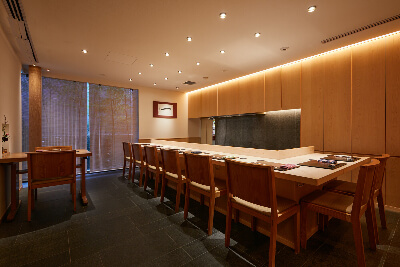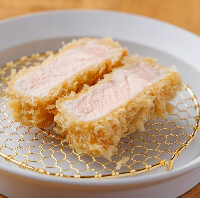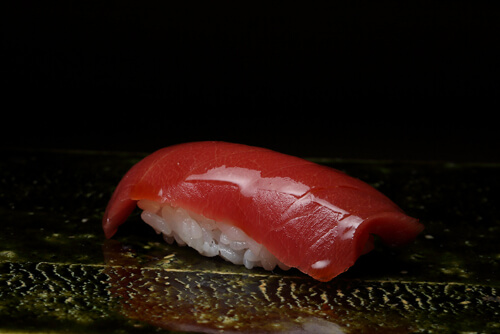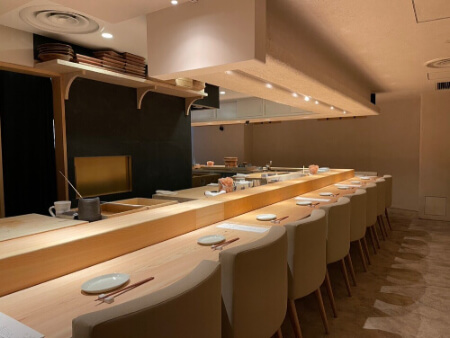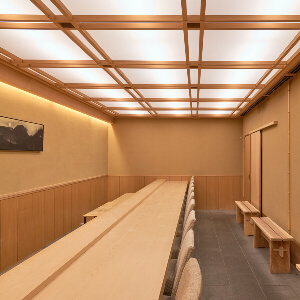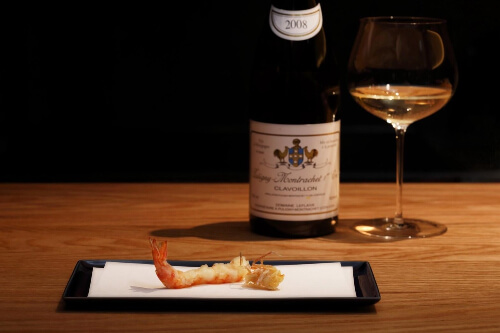Japanese Pickles (Tsukemono)

Japanese pickles (ÆąĢ©, tsukemono) are an important part of the Japanese diet, served with practically every traditional meal alongside rice and miso soup. They are valued for their unique flavors and commonly used as a garnish, relish, condiment, palate cleanser or digestive.
Tsukemono first appeared way back in Japanese history in the days before refrigeration when pickling was used to preserve food. As a result, some traditionally prepared types of pickles can be kept practically indefinitely. The different methods used to make tsukemono vary from a simple salting or vinegar brining, to more complicated processes involving cultured molds and fermentation.
All kinds of vegetables and some fruits are used to make tsukemono including, but not limited to, Japanese radish (daikon), cucumber, eggplant, carrot, cabbage, water lily root, ginger, shallots and plums (ume). Sometimes seaweed and other seafood are added to pickle mixtures for flavor and variety. Some pickling methods are also used to preserve and flavor seafood and meat dishes.

Below are the some of the most popular types of pickles:
- Salt (shiozuke)
Salt pickles, or shiozuke, are the simplest and most common types of pickles. The most basic consist simply of lightly salted, sliced vegetables, which result in pickles with the crisp texture and mild flavor of fresh (usually seasonal) vegetables. Heavily salted pickles, on the other hand, are more involved to prepare and have strong, complex flavors. Among these are pickled Japanese plums (umeboshi), which are often used to flavor rice balls (onigiri).
- Rice bran (nukazuke)
Nukazuke are common household pickles fermented in a mixture of roasted rice bran (the hard outer skin of the rice that is removed when polishing the rice grain), salt, konbu and other ingredients. Whole vegetables are stirred into the mash and allowed to cure from a day to several months. The resulting crisp, salty and tangy pickles are then rinsed clean, sliced and served. Nukazuke are rich in lactobacillus and said to aid in digestion.
- Sake lees (kasuzuke)
Kasuzuke are imperishable pickles preserved in a mixture of sake lees (the yeast mash that is left over after filtering sake), salt, sugar and sweet cooking wine (mirin). They are allowed to cure for anywhere from several days to several years, and the resulting pickles may be slightly alcoholic with flavors that vary from sweet and mild to strong and pungent depending on how long they were cured for.
- Soy sauce (shoyuzuke)
Shoyuzuke are pickles preserved in a soy sauce base. This method produces a wide range of pickles with flavors that vary from light and crispy to dark brown, salty, sweet relishes such as fukujinzuke. Note that shoyuzuke is a different preservation method than tsukudani, which are foods preserved by cooking in soy sauce and cooking wine (mirin).
- Vinegar (suzuke)
Pickles brined in vinegar are known as suzuke. Rice vinegar is commonly used as the pickling agent and lends a crunchy texture and sweet and sour flavor to the resulting pickles. However, rice vinegar has a low acidity and suzuke pickles will not keep long unrefrigerated.
- Miso (misozuke)
Similar to nukazuke, misozuke pickles are made by covering vegetables in miso, a fermented soybean mash. These types of pickles tend to be crisp with a salty miso flavor. Misozuke and nukazuke are made of similar vegetables, such as cucumbers, carrots and eggplant, and it may be difficult to tell the two types of pickles apart by just looking at them. Misozuke is also a popular way of preserving and marinating meat and fish.
Common pickle dishes
The following are some of the more common types of tsukemono that travelers are likely to encounter. Most can be found nationwide, except where noted, however the exact ingredients of each dish may vary from region to region and household to household.
Questions? Ask in our forum.
Restaurants
-
-
![]() Udatsu Sushi (Tokyo)Awarded One Star in 2024 - People from around the world visit to experience Mr. Udatsu's sushi. Inside the restaurant, which resembles an art gallery with its modern decor and numerous artworks, guests can enjoy sushi crafted from the highest quality ingredients. While the foundation is traditional nigiri, the menu also features original creations born from the chef's relentless curiosity and innovation.View on JapanEatinerary
Udatsu Sushi (Tokyo)Awarded One Star in 2024 - People from around the world visit to experience Mr. Udatsu's sushi. Inside the restaurant, which resembles an art gallery with its modern decor and numerous artworks, guests can enjoy sushi crafted from the highest quality ingredients. While the foundation is traditional nigiri, the menu also features original creations born from the chef's relentless curiosity and innovation.View on JapanEatinerary -
![]() Waketokuyama (Tokyo)Awarded One Star in 2025 - With a meticulous focus on allowing guests to enjoy seasonal ingredients at their peak, the menu changes approximately every two weeks. The signature dish, "Grilled Abalone with Seaweed Aroma," features thick slices of abalone generously coated in a rich liver sauce, offering an exquisite taste of the sea.View on JapanEatinerary
Waketokuyama (Tokyo)Awarded One Star in 2025 - With a meticulous focus on allowing guests to enjoy seasonal ingredients at their peak, the menu changes approximately every two weeks. The signature dish, "Grilled Abalone with Seaweed Aroma," features thick slices of abalone generously coated in a rich liver sauce, offering an exquisite taste of the sea.View on JapanEatinerary -
![]() Sushiroku (Osaka)Awarded One Star in 2024 - A cozy, family-run restaurant managed by a husband and wife. They are deeply committed to perfecting their shari (sushi rice) and use two types of vinegared rice tailored to complement each topping. Since 2019, the restaurant has consistently earned stars.View on JapanEatinerary
Sushiroku (Osaka)Awarded One Star in 2024 - A cozy, family-run restaurant managed by a husband and wife. They are deeply committed to perfecting their shari (sushi rice) and use two types of vinegared rice tailored to complement each topping. Since 2019, the restaurant has consistently earned stars.View on JapanEatinerary -
![]() Fry-ya (Tokyo)Exquisite fried dishes crafted by a head chef with experience earning stars in both Switzerland and Japan. The remarkably light tonkatsu is a favorite not only among Japanese diners but also among visitors to Japan. With the theme of "small portions, many varieties," guests can enjoy sampling a wide selection of tonkatsu in smaller portions.View on JapanEatinerary
Fry-ya (Tokyo)Exquisite fried dishes crafted by a head chef with experience earning stars in both Switzerland and Japan. The remarkably light tonkatsu is a favorite not only among Japanese diners but also among visitors to Japan. With the theme of "small portions, many varieties," guests can enjoy sampling a wide selection of tonkatsu in smaller portions.View on JapanEatinerary -
![]() Sushi Hayashi (Kyoto)Awarded One Star in 2024 - A unique sushi restaurant that blends traditional Edomae (Tokyo-style) sushi with Kyoto-style sushi, such as mackerel sushi and steamed sushi, in its courses. The head chef, who trained as a sushi artisan in Switzerland, carefully selects Swiss wines, making them a perfect pairing to enjoy with the meal.View on JapanEatinerary
Sushi Hayashi (Kyoto)Awarded One Star in 2024 - A unique sushi restaurant that blends traditional Edomae (Tokyo-style) sushi with Kyoto-style sushi, such as mackerel sushi and steamed sushi, in its courses. The head chef, who trained as a sushi artisan in Switzerland, carefully selects Swiss wines, making them a perfect pairing to enjoy with the meal.View on JapanEatinerary -
![]() Hikarimono (Tokyo)With a prime location and quality that rivals high-end sushi restaurants, this restaurant maintains the goal of being a place for everyday dining. It offers a casual and relaxed atmosphere, free from stiffness or formality. The signature "Hikari-maki," featuring ingredients such as sardines, pickled plum, and bettarazuke (sweet pickled radish), boasts unique flavors that are especially popular among international visitors.View on JapanEatinerary
Hikarimono (Tokyo)With a prime location and quality that rivals high-end sushi restaurants, this restaurant maintains the goal of being a place for everyday dining. It offers a casual and relaxed atmosphere, free from stiffness or formality. The signature "Hikari-maki," featuring ingredients such as sardines, pickled plum, and bettarazuke (sweet pickled radish), boasts unique flavors that are especially popular among international visitors.View on JapanEatinerary -
![]() Noguchi Tsunagu (Kyoto)Awarded One Star in 2024 - The sister restaurant of the highly exclusive Japanese cuisine establishment, Kyotenjin Noguchi. While maintaining the culinary essence of the main branch, this kappo-style restaurant incorporates ingredients from the chefŌĆÖs hometown in the Goto Islands. Its signature dish, Nikusui, is a masterpiece made from carefully prepared, top-quality A5-grade sirloin.View on JapanEatinerary
Noguchi Tsunagu (Kyoto)Awarded One Star in 2024 - The sister restaurant of the highly exclusive Japanese cuisine establishment, Kyotenjin Noguchi. While maintaining the culinary essence of the main branch, this kappo-style restaurant incorporates ingredients from the chefŌĆÖs hometown in the Goto Islands. Its signature dish, Nikusui, is a masterpiece made from carefully prepared, top-quality A5-grade sirloin.View on JapanEatinerary -
![]() TEMPURA & WINE SHINO (Tokyo)The kind of restaurant that is known only to true gourmets, serving as a sort of 'Hidden gem'. In a chic space with black walls and a ceiling adorned in gold, you can enjoy tempura with a light and elegant texture, delicately fried using refined techniques to achieve a thin, white batter that minimizes the aroma of oil. Savor tempura that maximizes the flavors of the ingredients, paired with Champagne and Burgundy wines carefully selected by the sommelier.View on JapanEatinerary
TEMPURA & WINE SHINO (Tokyo)The kind of restaurant that is known only to true gourmets, serving as a sort of 'Hidden gem'. In a chic space with black walls and a ceiling adorned in gold, you can enjoy tempura with a light and elegant texture, delicately fried using refined techniques to achieve a thin, white batter that minimizes the aroma of oil. Savor tempura that maximizes the flavors of the ingredients, paired with Champagne and Burgundy wines carefully selected by the sommelier.View on JapanEatinerary -
![]() Ginza Nominokoji Yamagishi (Tokyo)Tominokoji Yamagishi, an exclusive kaiseki restaurant from Kyoto, has opened its first location in Tokyo. Unlike its main branch, this establishment adopts an izakaya-style format, allowing diners to enjoy a more relaxed ├Ā la carte dining experience. Despite being located in Tokyo, the restaurant meticulously sources ingredients and even water from Kyoto, dedicating itself to faithfully recreating KyotoŌĆÖs culinary traditions.View on JapanEatinerary
Ginza Nominokoji Yamagishi (Tokyo)Tominokoji Yamagishi, an exclusive kaiseki restaurant from Kyoto, has opened its first location in Tokyo. Unlike its main branch, this establishment adopts an izakaya-style format, allowing diners to enjoy a more relaxed ├Ā la carte dining experience. Despite being located in Tokyo, the restaurant meticulously sources ingredients and even water from Kyoto, dedicating itself to faithfully recreating KyotoŌĆÖs culinary traditions.View on JapanEatinerary -
![]() Kitashinchi Kushikatsu Bon (Osaka)A restaurant that elevates Osaka's soul food, kushikatsu, to a luxurious level. Skilled chefs meticulously prepare each skewer using carefully selected premium ingredients such as Chateaubriand and foie gras. The skewers are fried in a custom copper pot using a unique oil blend based on cottonseed oil, enhancing the natural flavors of the ingredients.View on JapanEatinerary
Kitashinchi Kushikatsu Bon (Osaka)A restaurant that elevates Osaka's soul food, kushikatsu, to a luxurious level. Skilled chefs meticulously prepare each skewer using carefully selected premium ingredients such as Chateaubriand and foie gras. The skewers are fried in a custom copper pot using a unique oil blend based on cottonseed oil, enhancing the natural flavors of the ingredients.View on JapanEatinerary
-
















